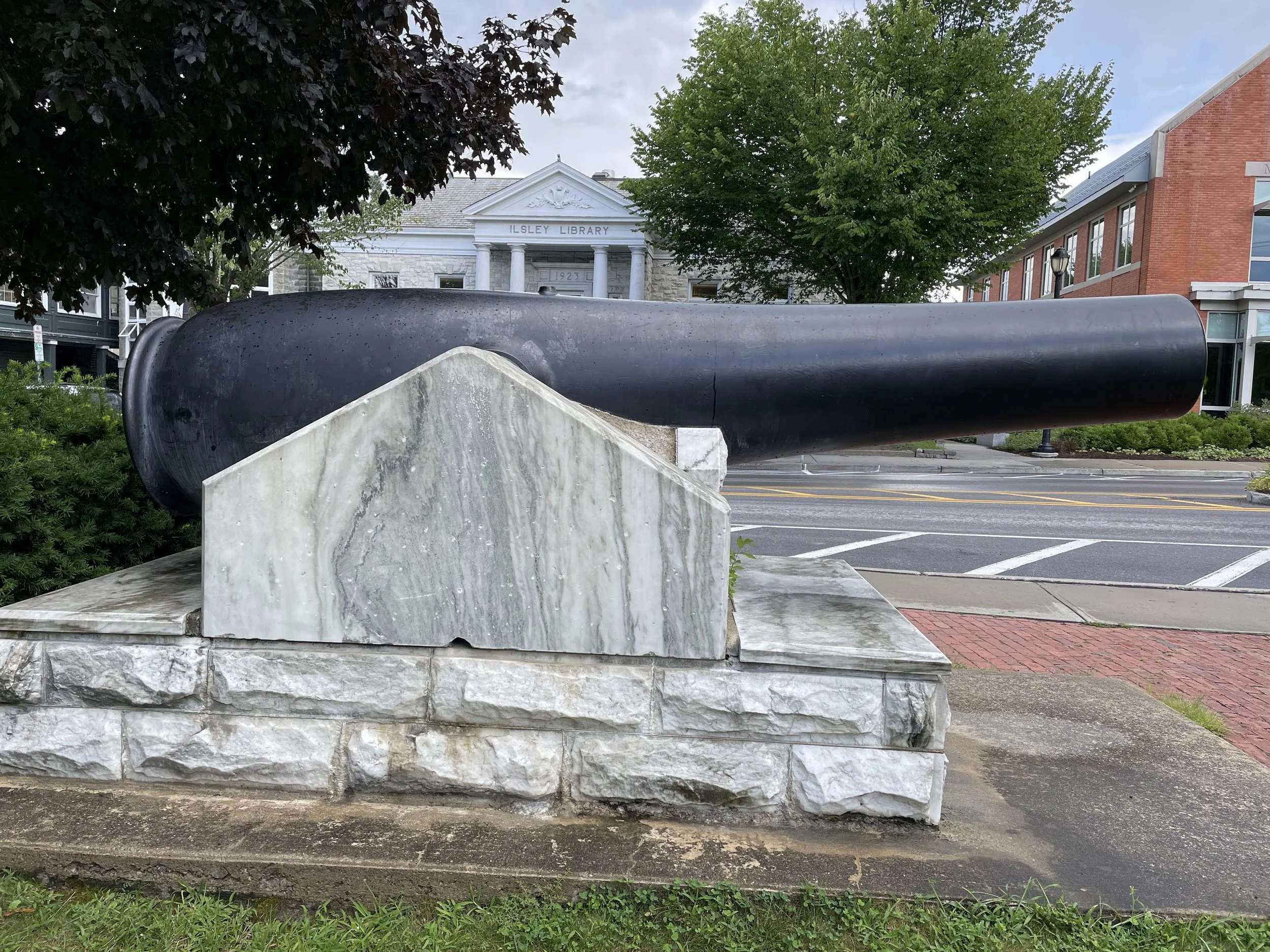10-Inch Rodman of Middlebury, Vermont
US Army 10-Inch Rodman displayed in Middlebury, Vermont
A 10-Inch Rodman, Pattern 1861, is mounted on a large stone pedestal in Middlebury, Vermont. It was manufactured for the US Army by Cyrus Alger and Company in 1866. It is registry number 128. It is marked as weighing 15,140 pounds as manufactured. The pedestal notes that the display was dedicated in 1910 by the Grand Army of the Republic.
In service, this type of cannon would have been mounted on a wrought iron carriage. The oval-shaped sockets in the rear of the cannon were to allow levers to change the elevation of the gun. This cannon is a smoothbore designed to fire projectiles which were 10-inches in diameter. In service, this cannon could fire either an approximately 125-pound round short or an approximately 100-pound explosive shell.
Though this type of cannon was produced for the US Army before, during, and after the American Civil War, very few saw combat service during the war. The vast majority were used to arm coastal fortifications around Northern cities which were never attacked. As a cannon produced after the war in 1866, the Middlebury Rodman almost certainly saw no combat service. It may or may not have ever even been mounted at a fort, spending its days at a US Army arsenal until it was donated by the US Government to be part of this Grand Army of the Republic monument in Middlebury.
In the years leading up to the war, US Army officer Thomas Jackson Rodman would create a technique that would allow much larger guns to be cast in iron. Rodman worked out that the traditional manner of casting a gun solid, allowing it to cool from the outside in, and then boring out the barrel would not work beyond a certain size tube. As such a gun cooled, the outside was the first to cool, and it would contract slightly as it did so, but as metal further and further toward the center began to cool and harden, it would contract beneath metal that had already contracted. Rodman’s innovation was to cast the guns with a tube going into the area where the bore would eventually be made. Into this tube was run water to cool the cast gun from the inside while fires burned on the outside of the casting. Cooling from the inside out, the metal contracted onto successive layers of already contracted metal. Eventually Rodman’s techniques were used to produce 8-Inch, 10-Inch, 15-Inch, and 20-Inch cannons for the US Army and 11-Inch and 15-Inch cannons for the US Navy.
US Army Rodman Cannons on original iron carriages at Fort McHenry in Maryland. In service, the Middlebury cannon would have been mounted on similar carriages.





